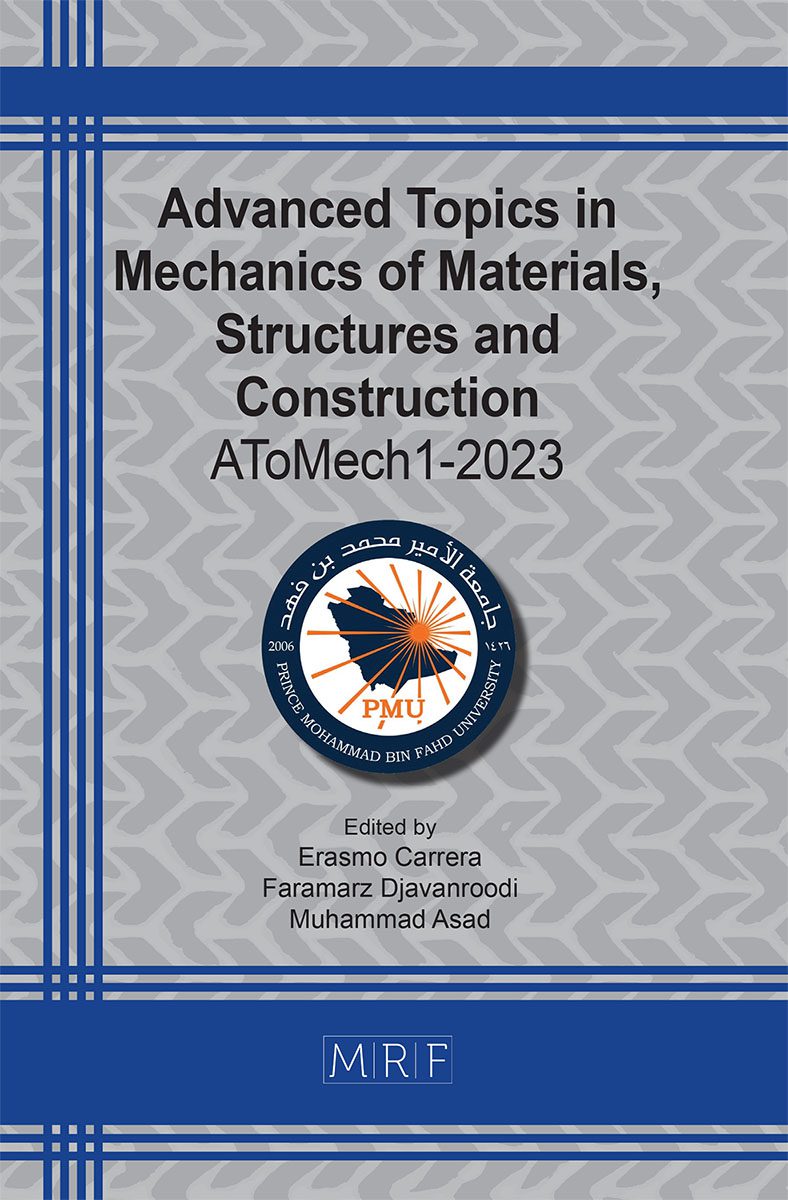Magnetoelastic deformation of conductive semilinear hyperelastic solids
Odunayo Olawuyi Fadodun
download PDFAbstract. This work investigates the radial deformation of conductive magneto-hyperelastic solid cylinder subject to azimuthal magnetic field. It shows effect of the current density on the radial deformation of the solid. A simple magnetoelastic energy function is proposed for the cylinder under consideration such that its purely elastic part corresponds to the strain energy of the well-known semilienar hyperelastic materials. The consequent magnetoelasticity field equations, in conjunction with the accompanying boundary conditions, are specialized for application to the problem of radial deformation of solid cylinder. The obtained magnetoelastic constitutive model shows that the stress distribution in the solids is sensitive to the magnetic induction while the associated magnetic field at point within the cylinder is deformation-dependent. Furthermore, it is revealed that the azimuthal magnetic induction produced by steady current within the solid cylinder increases along its radius. Finally, and among other things, the graphical illustration shows that the effect of steady axial current density on the magnitude of the displacement function at points within the cylinder is significantly pronounced.
Keywords
Magnetoelasticity, Radial Deformation, Hyperelastic Materials, Cylinder, Conductive Elastomer
Published online 8/10/2023, 11 pages
Copyright © 2023 by the author(s)
Published under license by Materials Research Forum LLC., Millersville PA, USA
Citation: Odunayo Olawuyi Fadodun, Magnetoelastic deformation of conductive semilinear hyperelastic solids, Materials Research Proceedings, Vol. 31, pp 715-725, 2023
DOI: https://doi.org/10.21741/9781644902592-73
The article was published as article 73 of the book Advanced Topics in Mechanics of Materials, Structures and Construction
![]() Content from this work may be used under the terms of the Creative Commons Attribution 3.0 license. Any further distribution of this work must maintain attribution to the author(s) and the title of the work, journal citation and DOI.
Content from this work may be used under the terms of the Creative Commons Attribution 3.0 license. Any further distribution of this work must maintain attribution to the author(s) and the title of the work, journal citation and DOI.
References
[1] G. A. Maugin, Continuum mechanics of electromagnetic solids, Asterdam: North-Holland, 1988.
[2] A. C. Eringen and G. A. Maugin, Electrodynamics of continuum I, New York: Springer, 1990. https://doi.org/10.1007/978-1-4612-3236-0
[3] Y. H. Pao, Electromagnetic forces in deformable continua, In: Nemat-Nasser, S (ed) Mechanics today, (1978) vol 4, 209-306. https://doi.org/10.1016/B978-0-08-021792-5.50012-4
[4] Z. Pei, T. Xiong and D. Ding, Nonlinear magnetoelastic deformation of porous solids, Math. Mech. Solids, (2021) 1-21. doi: 10.1177/108:2865219865
[5] N. H. Reddy and P. Saxena, Instabilities in axisymmetric magnetoelastic deformation of a cylindrical membrane, Int. J. Solids and Struc. (2018) 136-137: 203-219. https://doi.org/10.1016/j.ijsolstr.2017.12.015
[6] D. Garcia-Gonzalez and M. A. Hossain, A microstructural-based approach to model magneto-viscoelastic materials at finite strain, Int. J. Solids and Struc. (2021) 208-209, 119-132. https://doi.org/10.1016/j.ijsolstr.2020.10.028
[7] Z. Ren, W. Hu, X. Dong et al., Multi-functional soft-bodied jellyfish-like swimming, Nat. Commun. (2019) 10: 2703. https://doi.org/10.1038/s41467-019-10549-7
[8] A. K. Bostola and M. A. Hossain, A review on magneto-mechanical charactirazation of magnetorheological elastomers, Compos, Part B, Eng. (2020) 200: 108348 https://doi.org/10.1016/j.compositesb.2020.108348
[9] Ll. Dorfmann AND R. W. Ogden, Nonlinear model of electroelastic and magnetoelastic interaction, New-York: Springer, 2014. https://doi.org/10.1007/978-1-4614-9596-3
[10] B. A. Nadjar, A modelling framework for finite strain magnetoviscoelasticity, Math. Mech. Solids, (2020) 25 (2) 288-304. https://doi.org/10.1177/1081286519873963
[11] P. Saxena, M. Hossain and P. Steinmann, A theory of finite deformation magneto-viscoelasticity, Int. J. Solids Struc. (2013) 50: 3886-3897. https://doi.org/10.1016/j.ijsolstr.2013.07.024
[12] O. O. Fadodun, O. G. Fadodun, A. S. Borokinni, B. A. Olokuntoye, O. P. Layeni and A. P. Akinola, Electroelastic constitutive model for dielectric semilinear hyperelastic solids with application to radial deformation of a rotating tube, Meccanica, (2022) vol. 57, 2355-2363. https://doi.org/10.1007/s11012-022-01580-y
[13] A. Melnikov and R. W. Ogden, Finite deformations of an electroelastic circular cylindrical tube, Z. Angew. Math. Phys. (2016) 69, 60. https://doi.org/10.1007/s00033-016-0733-0
[14] L. Dorfmann and R. W. Ogden, The effect of deformation dependent permittivity on the elastic response of a finitely deformed dielectric tube. Mech Res Commun. (2018) 93, 47-57. https://doi.org/10.1016/j.mechrescom.2017.09.002
[15] V. Ferraro, Electromagnetic Theory. The Athlone Press, University of London, 1965.































